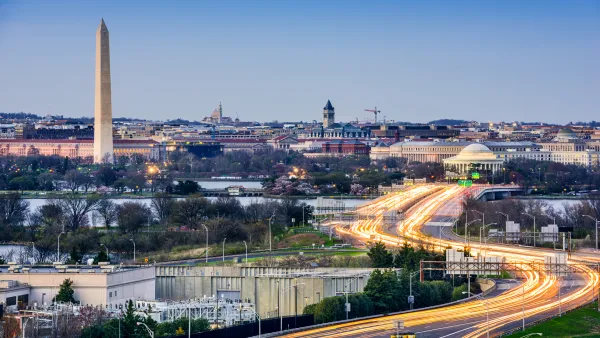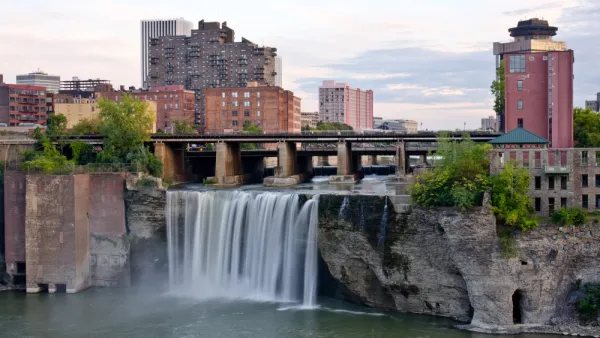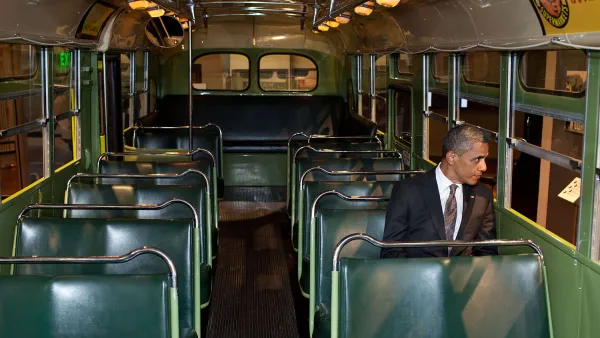I recently read President Obama’s autobiography, “Dreams From My Father.” It is well written and insightful. Obama uses personal stories to explore issues of identity, race, class, politics, power, and what it means to be ‘United Statesian.’ Let me share some observations about transportation and land use planning issues mentioned in the book.
I recently read President Obama's autobiography, "Dreams From My Father." It is well written and insightful. Obama uses personal stories to explore issues of identity, race, class, politics, power, and what it means to be ‘United Statesian.' Let me share some observations about transportation and land use planning issues mentioned in the book.

Many of Obama's greatest personal tragedies result from traffic accidents. In 1972 his father was seriously injured in a car crash in Kenya, and a decade later died in another crash there. In 1983 his half-brother David was killed in a motorcycle accident in Kenya. His brother, Roy, is described as a dangerous driver who had frequent accidents. Obama also mentions a high school friend, Duke, who died in a car wreck in Hawaii.
This is a stark reminder of the immense toll traffic accidents impose in both developing and developed countries. According to the World Health Organization, traffic fatality rates in low-income and middle-income countries (21.5 and 19.5 per 100 000 population, respectively) are double the rates in high-income countries (10.3 per 100 000), as illustrated below. Among higher-income countries the U.S. has one of the highest per capita traffic fatality rates, a result of high rates of per capita vehicle mileage. Although other health risks (cardiovascular disease, cancers) cause more deaths, traffic crashes tend to kill people at the prime of life and so impose particularly large loss of potential years of life.
The conventional assumption is that traffic crashes are an unfortunate price of progress best addressed by technical solutions such as better road and vehicle design, and campaigns to reduce traffic speeds and drunk driving, but some of us believe that mobility management strategies, which reduce per capita vehicle travel, can play an important role, while providing additional benefits such as congestion reduction, road and parking cost savings, consumer savings, energy conservation and emission reductions. Efforts to encourage use of safer modes must overcome the stigma and perceived danger associated with walking, cycling and public transportation, and the status associated with automobile travel, issues illustrated at various points in the book (at one point his grandmother asks his grandfather to chauffeur her to work to avoid frightening panhandlers, who happen to be African-American, and later he is gently ridiculed by colleagues for driving a small economy car).
Obama describes African traffic chaos, and crowded and dangerous buses, "Cars meandered across lanes and roundabouts, dodging potholes, bicycles, and pedestrians, while rickety jitneys--called matatus, I was told-stopped without warning to cram on more passengers." Only recently have international development agencies recognized the problems created by automobile-oriented transportation planning and the importance of policies that protect vulerable modes (walking and cycling) and favor efficient modes (cycling and public transit). In other words, developing country planners are beginning to see the value of following the European and Asian model (high vehicle and fuel prices, and multi-modal planning) instread of the North American model (cheap roads and fuel, with minimal investment in alternative modes).
While working as a community organizer, Obama struggles with the social and economic impacts of middle-class flight to suburbs. Certainly, from an individual household's perspective it is attractive to abandon troubled urban neighborhoods to flee high local crime rates and access better schools. Automobile dependency becomes a sort of moat to exclude poorer people who cannot afford a car. However, this tends to ruin traditional urban neighborhoods, concentrating poverty and despair. To the degree that transportation and land use policies favor automobile travel over walking, cycling and public transport, and suburban development over urban redevelopment, they contribute to this cycle.
Perhaps these experiences help explain why the Obama administration has worked so hard to coordinate transportation, urban and environmental policies. This is just the type of strategic coordination that professional planners can appreciate: it means that these organizations can cooperate, for example, by insuring that affordable housing is located in areas with good transportation options, and that poverty-reduction strategies are selected that also help achieve environmental objectives.
A key theme repeated in "Dreams From My Father" is that problems are often complex, involving many stakeholders with different perspectives. Planners deal with these issues daily. I sense in President Obama a fraternal passion for solving the multi-facetted problems facing individuals and communities.

Analysis: Cybertruck Fatality Rate Far Exceeds That of Ford Pinto
The Tesla Cybertruck was recalled seven times last year.

National Parks Layoffs Will Cause Communities to Lose Billions
Thousands of essential park workers were laid off this week, just before the busy spring break season.

Retro-silient?: America’s First “Eco-burb,” The Woodlands Turns 50
A master-planned community north of Houston offers lessons on green infrastructure and resilient design, but falls short of its founder’s lofty affordability and walkability goals.

Test News Post 1
This is a summary

Analysis: Cybertruck Fatality Rate Far Exceeds That of Ford Pinto
The Tesla Cybertruck was recalled seven times last year.

Test News Headline 46
Test for the image on the front page.
Urban Design for Planners 1: Software Tools
This six-course series explores essential urban design concepts using open source software and equips planners with the tools they need to participate fully in the urban design process.
Planning for Universal Design
Learn the tools for implementing Universal Design in planning regulations.
EMC Planning Group, Inc.
Planetizen
Planetizen
Mpact (formerly Rail~Volution)
Great Falls Development Authority, Inc.
HUDs Office of Policy Development and Research
NYU Wagner Graduate School of Public Service





























